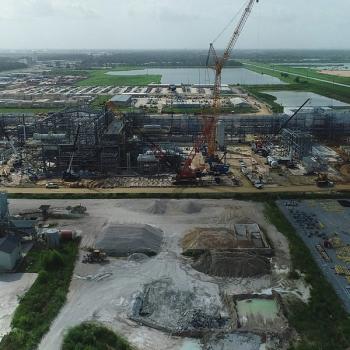
How gas turbine design and configuration affect efficiency and output
Gas turbines were initially used in the early 1940s for military purposes. In the 1950s, gas turbines first entered mechanical service applications. Since gas turbines are production type equipment and not custom designed, we usually refer to generations of gas turbines. The first generation of gas turbines began in the 1950s, and progressed through the 1970s (second generation) and 1980s (third generation) to present day efficiency improvements.
A gas turbine is a combination of turbo compressors and expansion turbines, with the addition of a combustor that produces the hot gas for expansion. A gas turbine configuration comprises a regenerator. The function of the regenerator is to use gas generator exhaust vapors to preheat the air exiting the air compressor, thus reducing the amount of fuel required by the gas turbine. The gas temperature, pressure, energy, and the horsepower produced in the different sections of the gas turbine are not the same.
Different types of gas turbines
The power produced in a gas turbine is typically three times the output power. This is because the air compressor typically requires two-thirds of the produced power. Gas turbines are classified into different types in terms of design, number of shafts, drive location, and cycle. There are two types of industrial gas turbine. The older type was grass roots industrial, that is, it was never built to function as an aircraft engine. The more modern approach (late 1960s) is the aeroderivative influenced industrial gas turbine. The design evolved from the aircraft industry, and is lighter in weight. Maintenance is easier than grass roots industrial type, since components are modularized and are changed out as opposed to the individual parts in the grass roots industrial.
Both industrial types are differentiated from aeroderivative types by the fact that the radial bearings are always hydrodynamic. In recent years, the emphasis on ease of maintenance has favored the aeroderivative type gas turbine over either type of industrial gas turbine. This is because the maintenance times for the aeroderivative gas turbines in the field are significantly less than industrial type gas turbines, since the aeroderivative unit can be easily exchanged with a similar unit in the field. Therefore, the field maintenance time is significantly lower for the aeroderivative gas turbine (typically 72 hours as opposed to 360 hours or more).
The advantages of an aeroderivative gas turbine are:
- Shorter maintenance times
- Small foot print
- Low specific weight
- Higher efficiency
- Faster start sequence
The disadvantages are that the cycle time between maintenance are shorter, it has lower tolerance to upsets, and has shorter bearing life (anti-friction bearings).
A hybrid type gas turbine is a combination of an aeroderivative gas generator and an industrial power turbine. This design offers the advantage of maintainability on the ‘hot section’ of the gas turbine and high reliability in the power turbine.
Number of shafts
Gas turbines are configured as single, dual or triple shaft designs. Most modern gas turbines are of the triple shaft design. In a single shaft gas turbine, the gas generator and power turbine are mounted on the same shaft. In a dual shaft gas turbine, the gas generator and power turbine are mounted on different shafts. Single shaft gas turbines are usually limited to generator drive applications, since the starting turbine load is significantly lower for a generator application, because a generator is started under zero load. Dual shaft turbines are used for mechanical drive, pump and compressor applications.
Gas turbines can be designed as hot end drive or cold end drive. The majority of first and second generation gas turbines were of a hot end drive, but most third generation gas turbines are of the cold and dry type. A cold end drive configuration is more reliable, since the coupling environment is significantly reduced in terms of temperature. This results in a much lower axial expansion of the drive coupling and subsequently increases the reliability of the gas turbine.
Gas turbine cycles
There are essentially three types of gas turbine cycles: first is the simple cycle, where the gas is exhausted directly to atmosphere; secondly, the regenerative cycle, where the exhaust gas is used in an exchanger (regenerator) to preheat the compressor discharge prior to the combustor; and finally, there is the combined cycle, where the exhaust gas is used in a heat recovery steam generator (HRSG) to either generate steam for plant use or as an expansion fluid is a steam turbine. Typical efficiencies are: simple cycle – 20 to 43 percent; regenerative cycle – 30 to 45 percent; and combined cycle – 55 to 60 percent.
Newsletter
Power your knowledge with the latest in turbine technology, engineering advances, and energy solutions—subscribe to Turbomachinery International today.




